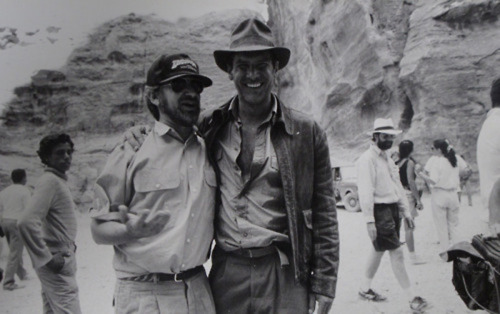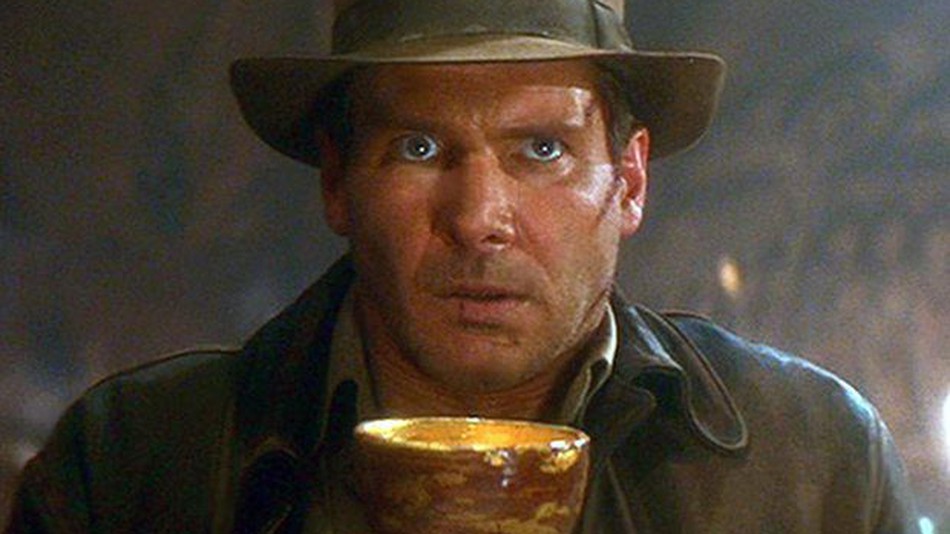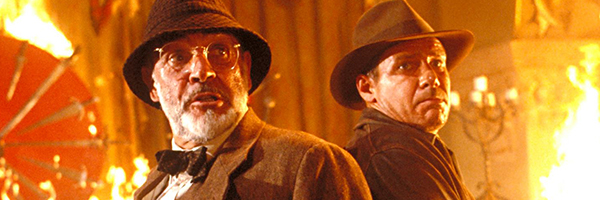Ever since the release of Jaws in 1975, Steven Spielberg has been the king of blockbuster cinema. He practically coined the term, giving us classic summer blockbusters like Raiders of the Lost Ark, E.T., and Jurassic Park. But there is one particular summer blockbuster of his that never quite seemed to reach the dizzying heights of acclaim it deserved. Perhaps it was brushed away because it was a sequel, perhaps it didn’t fit into the decidedly ‘Amblin-esque’ box he was primarily residing in at the time, or perhaps it was just too clever for its own good. Regardless, Indiana Jones and the Last Crusade is not only one of Spielberg’s finest blockbusters, but also one of his most personal.

As Spielberg has been increasingly vocal about over the years, he was not thrilled with the outcome of the first Raiders follow-up, Temple of Doom. He felt that film struck the wrong tone, saying; “I wasn’t happy with the second film at all. It was too dark, too subterranean, and much too horrific. I thought it out-poltered Poltergeist. There’s not an ounce of my own personal feeling in Temple Of Doom.”. Thus, going into the second attempt at a Raiders sequel, Spielberg was in a position he had not been in quite some time; he was the underdog.
The result is a big blockbuster sequel that does more than simply copy and paste the Indiana Jones character into another high-stakes adventure. Last Crusade instead opts to dig deep and essentially become an intimate character study first and foremost.

The film opens with a flashback to Indy’s childhood, where we see a young Indiana Jones attempting to rescue a golden crucifix from a gang of grave robbers. The ensuing chase becomes a formative experience for young Indy, during which he acquires his trademark chin scar, his fear of snakes, and his knack for using a whip. But the biggest effect of this sequence is that Indy fails. Upon getting the crucifix to his father, the local sheriff makes him return it to the grave robbers. The law undermines what Indy knows is right and instead gives the object back to them. In his first real adventure, Indy fails because he trusted others to do the right thing.
We then smash cut to an adult Indy, reclaiming that same golden crucifix. It’s a simple cut that informs us of so much about the character; he is driven by the failures of his childhood and attempting to right the wrongs he sees in the world. The film continues to base its story primarily in the exploration of all facets of Indy’s life. Where Raiders gave us a glimpse of him teaching class, Last Crusade shows us the reality of his teaching career to hysterical and accurate effect. He is so busy with his ‘side job’ that even as students are gathered outside his door begging for assistance, he sneaks out the window.
Then, of course, there is the meat of the story: Indy’s relationship with his father, which is the motivating factor that gets Indiana caught up in the search for the Holy Grail in the first place. The Grail was his father’s life’s work and something that Indy himself rejects and finds to be nonsensical. But when his father, Henry, goes missing, Indy embarks on a mission to find him. Here, Indy must face the effects of the absentee father he grew up with, head-on. He is literally having to follow in his father’s footsteps, and as a result, feels constantly inferior to him. This goes so far as to have both of them fooled into the mission by the Nazis and Donovan, and even for them to both be seduced by Dr. Elsa Schneider.

Which has grave effects of its own. Indy believes in righting the wrongs of the past, which is precisely why it is such a devastating blow to realize all of his work in finding the Grail and his father has only helped the Nazis grow even closer to acquiring it. Here, he is no better than the sheriff from the opening, he is assisting those wrongdoers in acquiring artifacts that do not belong to them.
In the end, Indy must come to terms with both of these core aspects of his character. In order to save his father’s life and do what’s right, he must forgive his father and put faith in something larger than himself to right the wrongs of the universe. He makes his way through the three trials leading to the Grail because of his father’s advice and his own faith. It is this same faith that allows Indy to choose ‘wisely’ and pick the correct grail, even as a greater power destroys Donovan and the rest of the Nazi party.
Indy is able to save his father and they all ride off into the sunset together, but not before one final layer of Indy is removed. Henry reveals that Indy’s real name is Henry Jones Jr. and that Indiana was actually their dog’s name, which Indy adopted because he loved and missed the dog. Even the most basic elements of Indy’s character in the prior films have been a façade, and it is here that we can see Henry Jones Jr. for who he truly is. If great sequels are born out of conflict, then Last Crusade excels in confronting every facet of Indy’s character on an internal and external level.

Where prior films had given us the hero version of Indiana Jones, inspired by the action serials that Spielberg and Lucas loved so much, Last Crusade gets to the roots of that inspiration in stripping back the layers and seeing what’s underneath, both with the character of Indy and with the filmmaking of Spielberg. It is certainly no mere coincidence that Henry Jones is played by Sean Connery, the original James Bond, whose films served as a primary inspiration for the Indy series.
Throughout the film, as Indy digs deeper, so does Spielberg. You can see it in his most heartfelt and head-on addressing of the estranged father/son dynamic, an honest reflection of his relationship with his own father. You can see it in the way that the story is ultimately a tale of faith lost and faith found, dealing with the importance of religion in a way that Spielberg has openly struggled with in his own way since boyhood. You can see it in the way Spielberg digs deep and delivers some of the most incredibly staged and choreographed action sequences ever put to film, with setpieces like the tank fight.
Indiana Jones and the Last Crusade sees Spielberg laying everything on the line, with the hunger and ambition of a filmmaker who has everything to lose. In making a film so rooted in getting to the core of both Indy and himself, Spielberg crafted a magnum opus of action/adventure cinema.